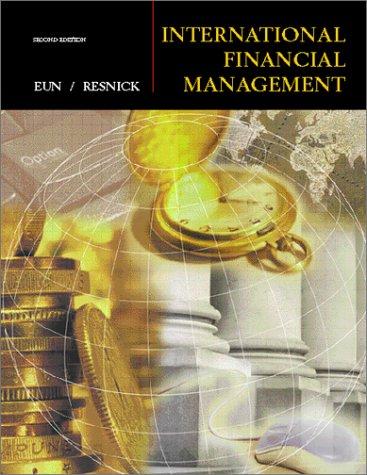Question
1.Calculate VECs WACC using the data in Exhibit 1. 3. Evaluate the profitability of the project with the NPV, IRR, MIRR, simple payback period, and


1.Calculate VECs WACC using the data in Exhibit 1.
3. Evaluate the profitability of the project with the NPV, IRR, MIRR, simple payback period, and discounted payback period methods. Is the project acceptable? Briefly explain. Why is the NPV method superior to the other methods of capital budgeting? Briefly explain.
4.Conduct the stand-alone risk analysis of the project with the sensitivity analysis and scenario analysis techniques. Explain why sensitivity analysis and scenario analysis can be useful tools in the capital budgeting decision-making process when economic and financial conditions are likely to change in the future.
MUST READ
At this point I keep on posting the same questions and get the same answers, which is a waste. I don't have access to the coment section for some reason, so that's why I can't reach out to the experts. Please this is my last shot at posting a qestion so I really needthorough answers to these two questions, with calculations and not unclear excel sheets or tables.
Exhibit 1: Financial data Joan Hamilton plans to use in estimating VEC's WACC Data to be used in the calculation of the cost of borrowing with bonds: Par value =$1,000, non-callable Market value =$1,085.59 Coupon interest =9%, semiannual payment Remaining maturity =15 years New bonds can be privately placed without any flotation costs Data to be used in the calculation of the cost of preferred stock: Par value =$100 Annual dividend =9% of par Market value =$102 Flotation cost =5% Data to be used in the calculation of the cost of common equity; C.APM data: VEC's beta =1.2 The yield on T-bonds =5% Market risk premium =5% DCF data: Stock price =$19.08 Last year's dividend (D0)=$1.00 Expected dividend growth rate =5% Bond-yield-plus-risk-premium: Risk premium =3.5% Amount of retained eamings available =$80,000 Amount of new common stock to be issued =($300,000)(0.6)$80,000 =$100,000 This exhibit shows the data needed to estimate the firm's WACC. Specifically, it first presents VEC's current market value optimal capital 2 Exhibit 2: The data Joan Hamilton plans to use in the calculation of the cash flows for the project and in the evaluation of its profitability \begin{tabular}{lrr} \hline The Machinery's Invoice Price & \\ Shipping Charges & \\ Installation Cost & \\ Depreciable Basis & & \\ & & \\ MACRS Depreciation Rates: & Year 1 & 33% \\ & Year 2 & 45% \\ & Year 3 & 15% \\ & Year 4 & 7% \end{tabular} Salvage Value: $40,000 Annual revenue and cost estimates (assume 3% inflation rate): 4 This exhibit shows the data needed to calculate the cash flows for this project. The new production system has a useful life of 4 years, a salvage value of \$40,000 and falls in MACRS 3-year class. Annual revenue and cost estimates are presented in the middle of the exhibit. The system is expected to generate sales of 1,500 units per year, with a unit price of \$250 and unit cost of \$150. VEC's net operating working capital requirement, which is shown at the bottom of the exhibit, is 15% of total sales
Step by Step Solution
There are 3 Steps involved in it
Step: 1

Get Instant Access to Expert-Tailored Solutions
See step-by-step solutions with expert insights and AI powered tools for academic success
Step: 2

Step: 3

Ace Your Homework with AI
Get the answers you need in no time with our AI-driven, step-by-step assistance
Get Started


